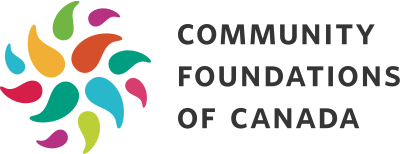Alex Draper from the Edmonton Community Foundation is the 2016 Community Philanthropy Fellow. As part of his fellowship, Alex will be undertaking a sabbatical project that will explore how granting data can be used to paint a picture of social impact in his community.
Throughout the year we’ll be sharing updates on Alex’s project here on the CFC Blog. In his first post, Alex explains what he’ll be up to and how you can help.
The idea for this project first struck me at the Community Knowledge Exchange Summit in 2014. In the session “Can Open Data Unlock Fort Philanthropy? A Case Study in Three Parts” I was introduced to Ajah and Powered By Data’s Landscape Project, which is an online tool that aims to track grants made by foundations and governments to charities and nonprofits in Canada.
Imagine the value of having information on all of the funded programs and services operating in your community and the funding that went towards those programs and services in one place.
The value of that was immediately evident to me. A database of all the funding made by grantmakers would also result in the creation of list of every program being funded. That list would allow you to see all programs and services operating in the community and how much money is going toward them. With this resource you could see areas that are underfunded, you could identify areas where funding has not been allocated efficiently, and you could use it to inform all future grant decisions
However, there are thousands of charities operating in my community (Edmonton) alone. Trying to go to every charity and parse out their programming would be an absolute nightmare. That nightmare would be further complicated by the reality of how charities are (under)funded and their need to protect what resources they have. Charities know there is limited money; and their funding is almost always attached to some specific program or strategy that was born out of an effort to cater to a funder’s requirements. There are apparent risks for charities if they decide to unravel the funding tapestries they’ve woven.
There are far fewer funding sources than there are charities and organizations, making data collection manageable. Plus, the vast majority of funders already produce reports that detail their funding decisions. Not only does approaching the problem from the collective side of funders make it much less difficult, but it should actually yield more accurate results! Furthermore, it’s the funders who are most likely to benefit from this database initially. Once those benefits are felt they will be much more likely to change their processes in ways that accommodate the database’s growth and improvement.
After years of preaching to organizations that they must partner with each other and avoid duplicating services, funders would have a tool to hear their own sermon and properly coordinate their efforts.
A few funders have already had their data loaded into the Landscape Tool, but little growth has happened over the last couple years. It’s here that my project comes in. For people to start buying into the database it has to be useful. For it to be useful, and reliably inform grants, it needs enough data to hit a critical mass. Trying to get to that critical mass by starting to build it for all funding in Canada is going to take a massive amount of work. However, if you focus your effort geographically, it is much less difficult to collect all of the data in a smaller region and hit a useful level of completeness. I’m going to do that, starting with Edmonton.
Being able to quickly search and see how many youth outreach programs exist in my city, how much money those programs receive, and who is funding them seems within reach! Here surfaces my first major challenge, one that needs to be figured out before I can merrily start pouring data into the database and watching it fill with glorious community knowledge. Every grant will have to be coded in a standardized manner. While this will require massaging in many instances, the toughest knot will probably be coding program areas and fields.
The database is an opportunity to be able to easily see how much money is going toward specific areas, for example: mental health supports for newcomers. It’s important to seize this opportunity and give everyone that ability. To do that, funding to mental health supports for newcomers will have to be coded with something like: “Mental Health” and “Newcomers.”
I want to ask for your help, because apparently I’m going to try to develop an industry standard coding method! Does your foundation have a system or coding method to track what sectors your grants are supporting? How did you develop it? Does it work well? How specific should a method be? We have a system at Edmonton Community Foundation that’s passable, however I’m certain there is an opportunity to improve it. Canada Revenue Agency uses this list of codes which may also be a good starting point.
I know, I’ve thrown a lot of questions at you, but please send me whatever advice you have at adraper@ecfoundation.org.
Thank you for reading my first post! I’m looking forward to an interesting project and this opportunity to work with the Carold Institute, Community Foundations of Canada, and as many people as possible at community foundations across the country. Until next time!
Alex




